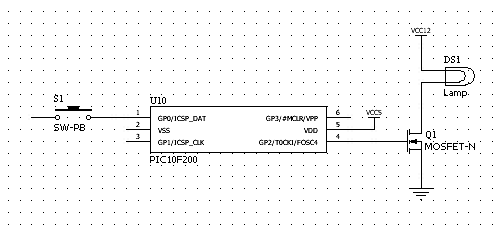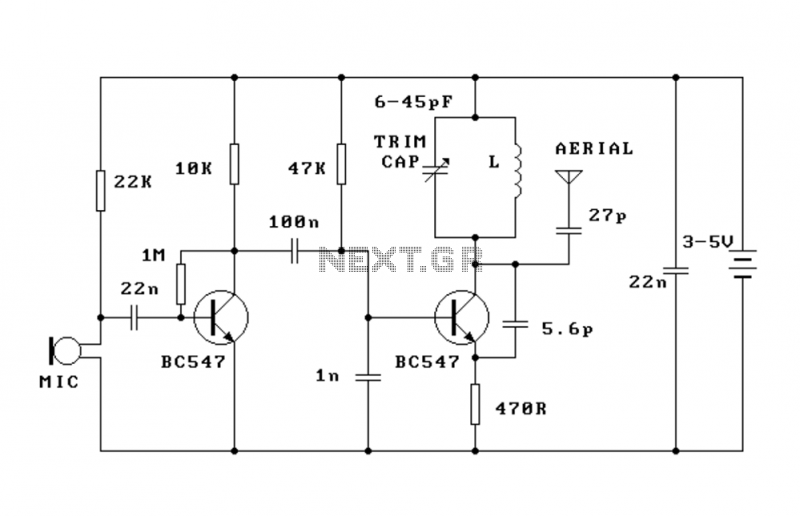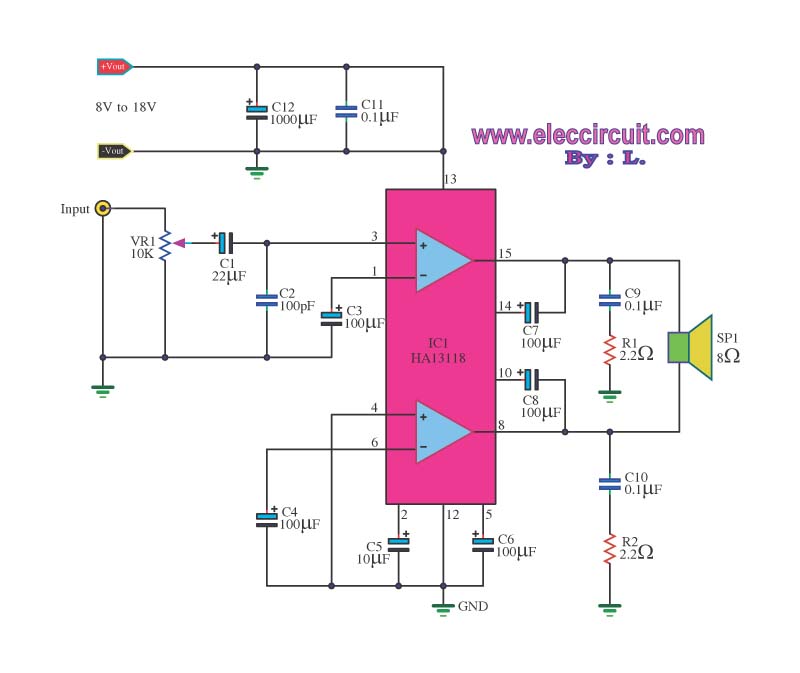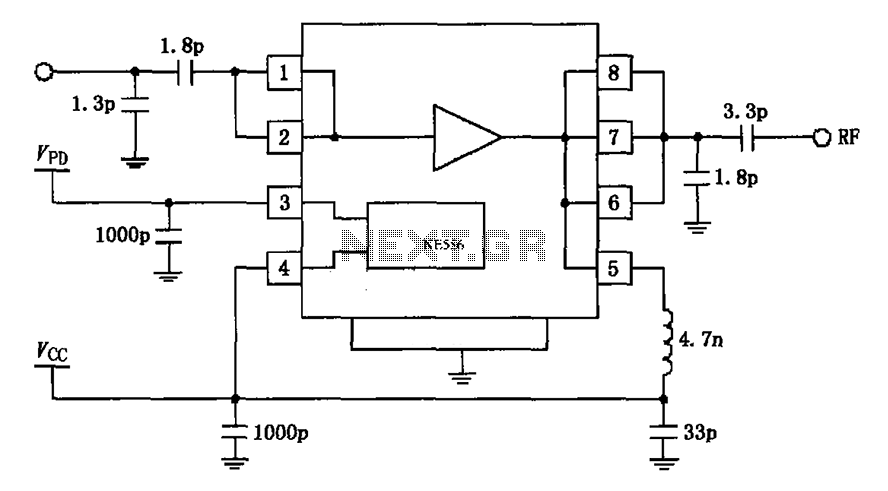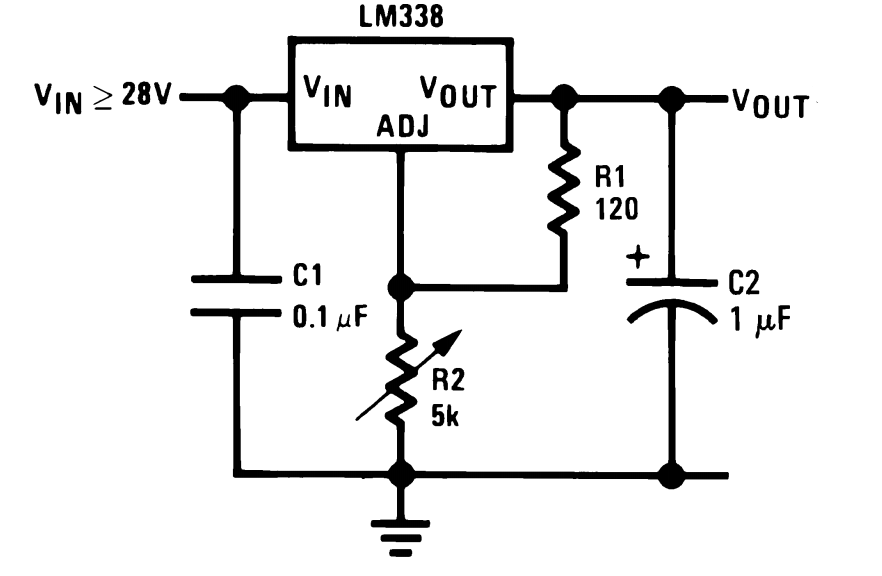
Motorcycle ignition circuit diagram
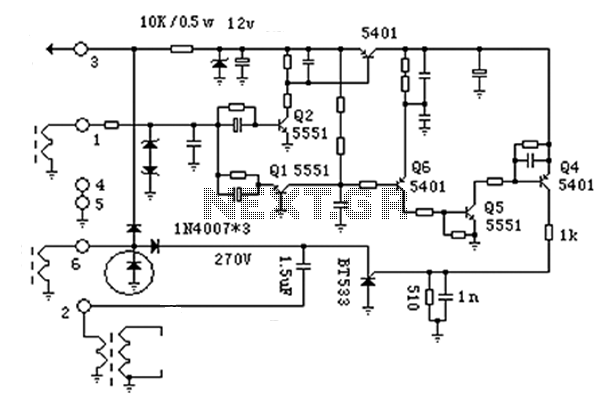
The anatomy of two ignition experiments revealed a common issue, specifically that both ends of the ignition coil are equipped with a diode. This design choice by manufacturers has implications for performance. The ignition coil generates a negative half-cycle diode voltage, which can lead to a short circuit; this condition causes a voltage drop due to heating in the ignition coil. Upon examination after removing the short circuit, a voltage comparison indicated that the voltage reached approximately 200 volts, while the voltage dropped to 60-70 volts when the diode was short-circuited. Conversely, when the diode was not short-circuited, the voltage increased to about 260 volts. It was noted that starting the engine was noticeably easier without the short-circuited diode, particularly in winter conditions, demonstrating an improved starting effect after eight months of use without the diode. Discussions among peers in this field have highlighted that diodes can prevent current imbalance in the DC magnetic field generated by the magnetic cores, suggesting that the use of soft iron cores may be inappropriate in this context. The magnetic field varies after the vehicle starts, generating an AC output. The distinction between AC and DC power supplies is significant; AC has alternating polarity, while DC maintains a constant polarity. Analyzing the positive and negative half-cycles of DC power supply reveals insights into the magnetic field generated by DC magnetization, which may not be suitable for permanent magnetic core applications. Caution is advised regarding the loading of a three-phase generator, as it must be balanced, and single-phase power should not be overloaded.
The ignition coil is a crucial component in automotive ignition systems, functioning to transform low battery voltage into the high voltage necessary to ignite the fuel-air mixture within the combustion chamber. The presence of diodes at both ends of the ignition coil serves to manage the electrical characteristics of the system, particularly during the negative half-cycle of the voltage waveform. This design aims to protect the ignition coil from potential damage caused by reverse polarity and to maintain efficient operation of the ignition system.
In the event of a short circuit, the diode’s role becomes critical, as it can lead to excessive heating within the ignition coil due to the resultant voltage drop. The observed voltage levels during testing illustrate the impact of the diode on ignition performance. The significant difference in voltage readings—200 volts with a short circuit versus 260 volts without—highlights the importance of maintaining proper diode function to ensure optimal ignition coil performance.
Additionally, the discussion surrounding the magnetic properties of the ignition system underscores the complexity of the electrical environment within the vehicle. The transition from a DC to an AC output as the vehicle operates reflects the dynamic nature of the ignition system's magnetic field, which is influenced by the changing current flow. This behavior can affect the efficiency of the ignition process and the overall performance of the engine.
The insights gained from these experiments emphasize the necessity of understanding the electrical and magnetic principles involved in ignition systems. Proper design and maintenance of components such as diodes and ignition coils are essential to prevent issues such as voltage drops, overheating, and inefficient engine performance. Furthermore, considerations regarding the load on three-phase generators and the potential for overload in single-phase systems are critical for ensuring the reliability and longevity of automotive electrical systems.Anatomy of the two ignition experiments, measuring the three normal ignition, found a common problem, and both ends of the ignition coil has a diode. Why manufacturers do this This ignition coil generates a negative half cycle diode voltage is short-circuited, the ignition coil will heat generated voltage drop. The autopsy carried out after a short-circuit is removed diode test comparison: speed to be at a voltage of about 200 volts, fuel door after a short circuit diode voltage drop of 60 to 70 volts.
No short circuit diode voltage rises to about 260 volts. Start comparison, just feel, if there is a short circuit of the diode to turn three times, no short circuit diode half turn to lap started. I now use is to remove the short-circuit diode igniter, more than eight months, especially in winter effect is obvious good start.
We have experience in this area friends to talk about their own experiences! Diodes prevent current imbalance DC magnetic field magnetic cores are produced, said one used here is inappropriate. 1, this is a soft iron core, has been in a magnetic field. 2, after starting the car, the magnetic field is varied, 3, changes in the magnetic field generating AC output.
AC power supply. 4, the difference between the AC and DC power supply in there AC polarity is changing power supply, DC power supply is a constant polarity power. We DC positive polarity power supply (positive half cycle) and the DC power supply negative (negative half cycle) to analyze your AC things clear.
You are talking about core magnetic field generated by the DC magnetization may be used to bring a permanent magnetic core theory so use the generator is not too suitable. If the three-phase generator is equal to note that large to three-phase power load, single-phase power should be careful not to overload, of course, three-phase power can not be overloaded.
The ignition coil is a crucial component in automotive ignition systems, functioning to transform low battery voltage into the high voltage necessary to ignite the fuel-air mixture within the combustion chamber. The presence of diodes at both ends of the ignition coil serves to manage the electrical characteristics of the system, particularly during the negative half-cycle of the voltage waveform. This design aims to protect the ignition coil from potential damage caused by reverse polarity and to maintain efficient operation of the ignition system.
In the event of a short circuit, the diode’s role becomes critical, as it can lead to excessive heating within the ignition coil due to the resultant voltage drop. The observed voltage levels during testing illustrate the impact of the diode on ignition performance. The significant difference in voltage readings—200 volts with a short circuit versus 260 volts without—highlights the importance of maintaining proper diode function to ensure optimal ignition coil performance.
Additionally, the discussion surrounding the magnetic properties of the ignition system underscores the complexity of the electrical environment within the vehicle. The transition from a DC to an AC output as the vehicle operates reflects the dynamic nature of the ignition system's magnetic field, which is influenced by the changing current flow. This behavior can affect the efficiency of the ignition process and the overall performance of the engine.
The insights gained from these experiments emphasize the necessity of understanding the electrical and magnetic principles involved in ignition systems. Proper design and maintenance of components such as diodes and ignition coils are essential to prevent issues such as voltage drops, overheating, and inefficient engine performance. Furthermore, considerations regarding the load on three-phase generators and the potential for overload in single-phase systems are critical for ensuring the reliability and longevity of automotive electrical systems.Anatomy of the two ignition experiments, measuring the three normal ignition, found a common problem, and both ends of the ignition coil has a diode. Why manufacturers do this This ignition coil generates a negative half cycle diode voltage is short-circuited, the ignition coil will heat generated voltage drop. The autopsy carried out after a short-circuit is removed diode test comparison: speed to be at a voltage of about 200 volts, fuel door after a short circuit diode voltage drop of 60 to 70 volts.
No short circuit diode voltage rises to about 260 volts. Start comparison, just feel, if there is a short circuit of the diode to turn three times, no short circuit diode half turn to lap started. I now use is to remove the short-circuit diode igniter, more than eight months, especially in winter effect is obvious good start.
We have experience in this area friends to talk about their own experiences! Diodes prevent current imbalance DC magnetic field magnetic cores are produced, said one used here is inappropriate. 1, this is a soft iron core, has been in a magnetic field. 2, after starting the car, the magnetic field is varied, 3, changes in the magnetic field generating AC output.
AC power supply. 4, the difference between the AC and DC power supply in there AC polarity is changing power supply, DC power supply is a constant polarity power. We DC positive polarity power supply (positive half cycle) and the DC power supply negative (negative half cycle) to analyze your AC things clear.
You are talking about core magnetic field generated by the DC magnetization may be used to bring a permanent magnetic core theory so use the generator is not too suitable. If the three-phase generator is equal to note that large to three-phase power load, single-phase power should be careful not to overload, of course, three-phase power can not be overloaded.
Warning: include(partials/cookie-banner.php): Failed to open stream: Permission denied in /var/www/html/nextgr/view-circuit.php on line 713
Warning: include(): Failed opening 'partials/cookie-banner.php' for inclusion (include_path='.:/usr/share/php') in /var/www/html/nextgr/view-circuit.php on line 713
